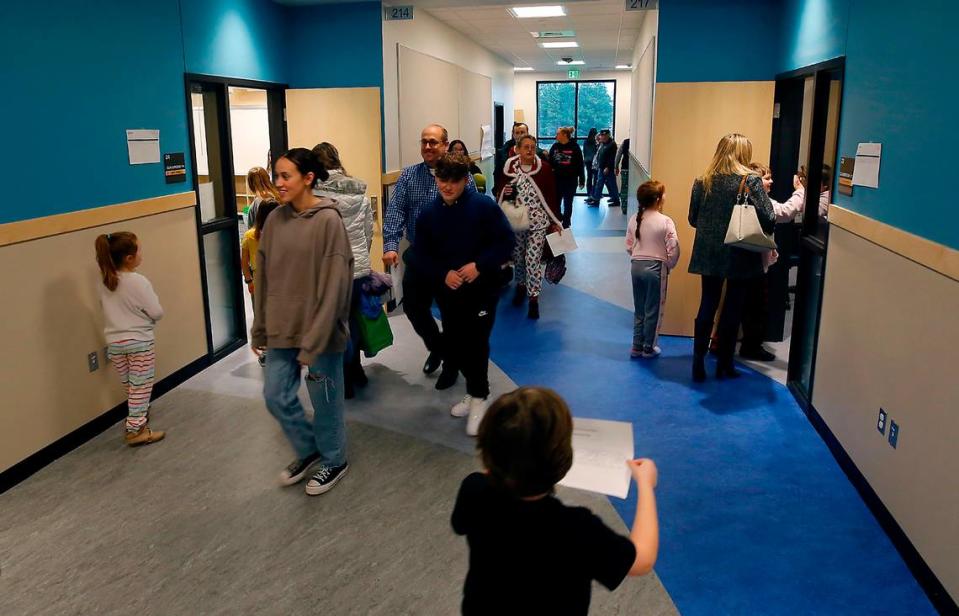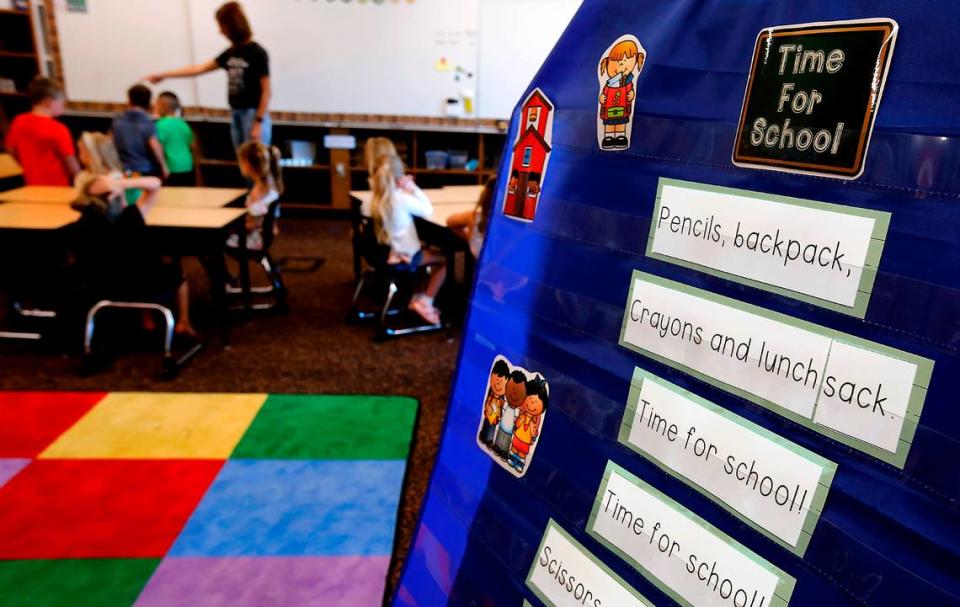Sticker shock hits taxpayers in this Tri-Cities district, but schools still face cuts
After not paying school taxes for a year, property owners in the Kennewick School District could suffer a bit of sticker shock when opening their 2024 tax bill.
No taxes were collected last year to support the largest Tri-Cities school district after the district’s operating levy failed twice to pass the year before.
Then, last February, voters approved a new operating levy starting this year.
The good news is soaring property values mean taxpayers won’t have to pay as high a rate as initially thought — roughly 22 cents less on every $1,000 of assessed value.
But as the Kennewick area grew wealthier, the Kennewick School District now expects to lose some of its matching money from Washington state, starting with $2.5 million in the 2024-25 school year.
The reduction adds another level of complexity to the school district’s budgeting woes, which started with enrollment decreases during the COVID pandemic and were exacerbated greatly after voters initially rejected the levy proposals.
The district already expected to operate on an annual budget deficit of $5 million to $10 million the next few years.
Now, as the district gears up to draft next year’s spending plan, leaders will need to figure out how to cover more programs and staff with even less money than it anticipated.
The district already predicted it would need to lay off some of the classroom staff who helped keep class sizes small because COVID relief money is expiring. But the impact of the reduced state match on Kennewick classrooms and programs is not immediately clear.

The state’s levy equalization program, known formally as “Local Effort Assistance” or LEA, was created in 1987 to mitigate the educational disparity between property-poor school districts and high-value school districts with a state contribution.
In 2021, 166 of Washington’s 295 school districts were eligible for equalization money totaling $305 million.
“People have to anticipate that the burden is going to fall more on the local community, but there’s (also) more value in the community,” Superintendent Traci Pierce said. “We’re not going to be like Bellevue. But in those higher valuation districts on the west side, there is no LEA.”
The district has begun budgeting for the next school year, and school funding tweaks from the Washington Legislature this year could soften the blow.
Kennewick operations levy
Voters agreed in February 2023 to a smaller three-year levy to support basic education programs and school employees the state doesn’t fully pay for.
It also funds extracurricular programs like sports, as well as Kennewick’s new elementary school safety officer positions.
Instead of paying the $1.73 on every $1,000 of assessed property value, as was advertised during the election, property owners will pay a rate closer to $1.51 on every $1,000 this year.
The total annual cost for a home valued at $300,000 at that new rate would be $453. The savings between the two rates is about $66 on that home.

Kennewick will still get the full $72 million it requested from district taxpayers over the next three years. School districts do not receive more money when assessed values rise because the district can only levy the amount that voters approved.
The district will run into trouble in 2025 and 2026, when its new levy rate falls to $1.42 and $1.33 per $1,000, respectively.
The state’s equalization formula helps any school district that does not generate a levy of at least $1,990 per student when the rate is $1.50. Because the new rates will fall below that threshold, Kennewick will end up losing part of its state match.
“I don’t think it was predictable,” Pierce said. “It was not in line with our predictions, based on all the good data we had... Our projections aren’t just based on nothing, they’re based on data and past trends and history.”
The district projected property valuations would rise $1.2 billion last year.
But that didn’t happen.
Instead, new values were more than double projections — about $2.8 billion — and now the district’s valuation is set at $16.7 billion.
Most of the rise in Kennewick’s value came from Benton County’s reassessment last year, which had homeowners worried about higher tax bills. New construction in the district only accounted for an additional $235 million in value.

If projections had showed a higher increase in property values, the district would have asked for more money, which in turn would have driven the rate above $1.50 and allowed the district to receive its full allowable match.
“That’s the premise of the formula,” said Vic Roberts, Kennewick’s executive director of business operations. “Our levy used to be above $1.50, but now we’re at the point where the assessed values went up so high that we need to levy more money. Instead of levying $24.5 million, just to make up the lost $2.5 million of LEA, we should have probably levied $2 million more to not lose ground.”
But Kennewick won’t be able to readjust its levy rate until its current levy expires at the end of 2026.

End of COVID relief
The school district was desperately seeking to pass a levy last year to avoid cuts to programs and staff.
A double levy failure in 2022 left Kennewick with no levy — and no state match — to collect in 2023, so staff plugged a $34 million hole with COVID relief money, budget cuts and reserves.
Kennewick School District currently operates with a $300 million budget that pays for general education and dozens of other learning programs.
The difference in local funding between the first levy Kennewick proposed in 2022 and the one passed a year later by voters was about $42 million less.
While the approved levy is a big relief to school district staff and teachers, the lost $2.5 million in equalization next year and the deadline to spend the last of their pandemic-era Elementary and Secondary School Emergency Relief (ESSER) funds will present a budgeting challenge.
“We’re sort of overstaffed in areas because we’ve been using ESSER funds to keep some class sizes lower to help with learning loss, which is one of the allowable (expenditures) of ESSER,” Pierce said.
Kennewick still has nearly $14 million in ESSER 3 funds it needs to allocate before its Sept. 30 deadline, according to Edunomics Lab.

